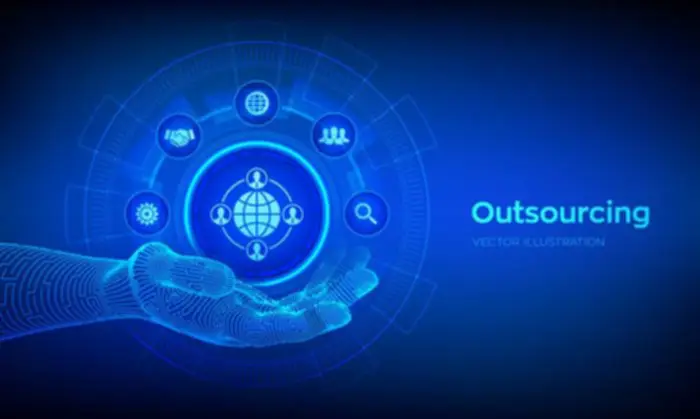Qodana Scan is an Azure Pipelines task packed inside the Qodana Azure Pipelines extension to scan your code with Qodana. We will discover tips on how to execute a selected Pipeline Task under certain conditions on this article. There are a lot of duties out there, that normally simplify a task or make it more readable. Every task, in the background, is only a script (either powershell or nodejs/javascript). However that does require plenty of scripting and so, plenty of effort. So it would be an advantage to use a task to keep away from wasting azure devops benefits you lots of time.

The Method To Make Task Dependent On A Selected Task On Azure Pipeline Yaml?

Won’t run if the pipeline execution is cancelled.always()Runs all the time software quality assurance (QA) analyst whatever the standing of previous duties or pipeline cancellation. We’ve successfully created a pipeline with multiple phases and jobs, and we’ve tested it. The pipeline ran without any points, completing all phases and jobs successfully. If you want the steps to create a azure devops pipeline, please observe ⚙️ Creating Your First Azure DevOps Pipeline 🛠️. Stages are the large steps in your recipe, like mixing the batter, baking the cake, and adorning it.
Instance 2: Re-use Parameterized Template In Multiple Construct Phases
Click on this button to initiate a guide run of the pipeline. If your pipeline is about as a lot as set off on specific branches, you could be prompted to pick the branch you need to run the pipeline for. Create your Terraform configuration files and retailer them in a repository. This repo could be in your Azure DevOps project, or hosted elsewhere.
Releases: Microsoft/azure-pipelines-tasks
In this instance, we define a configuration file to provision a useful resource group containing a VNET and subnet. If you wish to analyze a monorepo that incorporates more than one project, you have to ensure that you specify the paths to each project for evaluation in your azure-pipelines.yml file. Using the expression language you must be capable of finely control the execution behavior of you Azure build and launch pipelines. By default, every Task (Jobs and Stages) has a built-in dependency on the earlier Task, which means, that if the previous task fails, then the current task is not going to be executed. An Azure DevOps Pipeline is a set of Tasks that are executed in a sequence by the Agent. Sometimes, it may be required to execute a particular task primarily based on some logical situation.
An Azure Pipeline Job is a grouping of tasks that run sequentially on the same target. In many circumstances, you will need to solely execute a task or a job if a specific condition has been met. Azure Pipeline conditions enable us to define conditions beneath which a task or job will execute. For more information on Azure Pipeline conditions, see Azure Pipeline Conditions. With situation property on every build task we can check with respective parameters and activate the duty based mostly on the supplied worth of the parameter.
Alternatively, you presumably can configure your pipelines utilizing the Classic interface as defined on the Microsoft documentation portal. Triggering this job is decided by the repository sort that you are using in Azure Pipelines. This extension was created by Microsoft with help from the group.

Azure Pipelines allows you to specify parameters both in templates and pipelines. They are set by way of the parameters part in an Azure Pipelines YAML. If you utilize the classic editor to create pipelines, add the Qodana Scan task to the pipeline configuration after which click it. If ‘ExecuteTaskBasedonCondition’ is true, the Task will run; otherwise, will most likely be skipped. Below is a screenshot exhibiting the duty being skipped when the variable is set to false.
Might it’s an option to add a configuration chance to have control over the download location? For instance, we allow access from our build agents to our Artifactory occasion and some pipelines already retrieve the sonar scanners from there (Artifactory principally appearing as a “proxy”). There might be 5-10 .csproj information (I don’t know this beforehand, only at runtime) – the problem is every may need a unique model. One method I tried was looping over a parameter list, nevertheless it appears like parameters should be defined at compile time, and can’t be created on the fly. In this text, we’ll have a look at the means to run Terraform in an Azure DevOps pipeline step by step.
One of the advantages of Azure Pipelines is that it mechanically updates your tasks to the most recent minor model. Both Microsoft and Extension Authors can by chance break your pipelines. You can embrace the Snyk task in your pipeline to test for security vulnerabilities and open-source license points as a half of your routine work. In this way, you’ll find a way to take a look at and monitor your application dependencies and container pictures for safety vulnerabilities.
Below are the built-in conditions that can be utilized to regulate the execution of duties. You can also have your own custom circumstances to regulate the execution of the Tasks. Codefresh workflows redefine the finest way pipelines are created by bringing GitOps into the combination and adopting a Git-based process as a substitute of the identical old ClickOps. Codefresh is a CI/CD platform that supports Azure and other cloud environments, and is a substitute for Azure DevOps. Azure Pipelines additionally provides a UI that permits you to define pipelines manually. You can specify how the pipeline should construct and check your code, and a launch pipeline that defines how artifacts generated by the build course of ought to be deployed to a goal surroundings.
- If the worth of the variable ExecuteTaskBasedonCondition is about to true then the Task will execute in any other case will probably be skipped.
- In this state of affairs, you could need to execute a Task / Job / Stage when the worth of a variable is about to true.
- You also wants to contemplate the using a Continuous Integration/Continuous Delivery (CI/CD) platform.
- Won’t run if the pipeline execution is cancelled.always()Runs on an everyday basis whatever the standing of previous duties or pipeline cancellation.
- You can use secret variables for sensitive data you do not want exposed in the pipeline, such as passwords, entry tokens, and IDs.
The Hub enables you to to seek out curated Argo templates, use them in your workflows, share and reuse them in a way that was by no means potential earlier than. The Codefresh platform is powered by the open supply Argo tasks and workflows aren’t any exception. The engine that is powering Codefresh workflows is the popular Argo Workflows project accompanied with Argo Events. Codefresh is totally adopting an open supply improvement mannequin, transferring towards a standardized and open workflow runtime whereas on the similar time giving again all our contributions to the neighborhood. In this text, we’ve discussed how to handle task execution based on situations. Usually I see a healthy mix of script tasks (even scripts are run by tasks) and different tasks in pipelines.
Maybe even a local path could be adequate after deploying the scanners to the construct agents. To run your new pipeline, first, navigate to Pipelines within the left sidebar. Choose the pipeline that you just wish to run from the listing of accessible pipelines. But now you may must go through all your pipelines and substitute the old task with the short-term substitute.
Rather than executing when all previous jobs have been profitable, I need to only execute the artifact jobs when the earlier jobs had been successful and the set off was not a pull request. Let’s now learn to use custom circumstances to manage the execution of Tasks. In this state of affairs, you could wish to execute a Task / Job / Stage when the worth of a variable is ready to true. A template in this case is a group of tasks that can be re-used throughout build pipelines and construct levels. With parameters and construct conditions you possibly can dynamically adjust configuration for the template relying on the stage or pipeline the place the template is being built-in. Secret variables are encrypted, meaning you have to use them in a pipeline with out exposing their values.
For example, you might have a “Build” stage for compiling your code and a “Test” stage for working tests. Not all of the variables I have to cross in are static values, some are the outcomes of different tasks (in this case ARM deployments), which implies that I am setting some multi-job output variables. Your Azure DevOps project is now related to your Vercel project with automated production deployments on the main branch. You can update or create pipelines in the Azure DevOps project to customise the Vercel deployment habits through the use of the options of the Vercel Deployment Extension.
The situation in the above screenshot determines whether or not the duty must be executed based on the variable’s worth. In the pipeline, add a situation to manage execution only when the variable ‘ExecuteTaskBasedonCondtion’ is true. By default, each Task (Jobs and Stages) has a built-in dependency on the earlier Task.
Transform Your Business With AI Software Development Solutions https://www.globalcloudteam.com/ — be successful, be the first!



